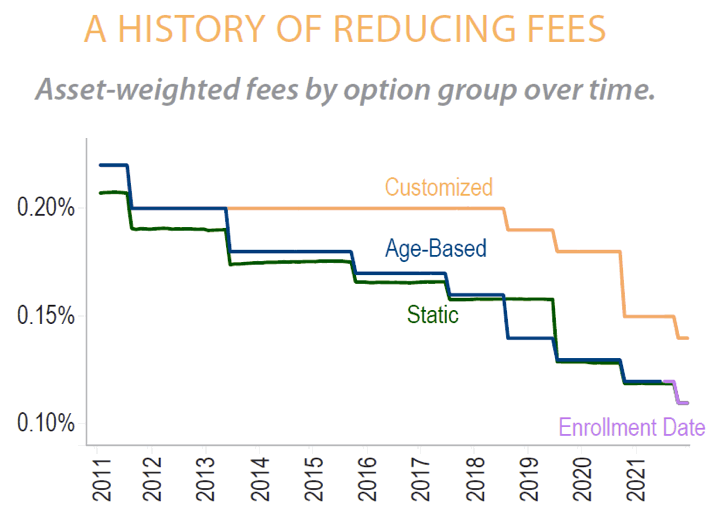 Investment research firm Morningstar has released their annual 529 College Savings Plans gold/silver/bronze medalist ratings for 2021. While the full ratings and plan analysis for every individual plan are restricted to paid premium members, the vast majority are mediocre and can be ignored.
Investment research firm Morningstar has released their annual 529 College Savings Plans gold/silver/bronze medalist ratings for 2021. While the full ratings and plan analysis for every individual plan are restricted to paid premium members, the vast majority are mediocre and can be ignored.
If you are among the 50% of the population who either don’t get an in-state tax break or have “tax parity” where you get the same tax break regardless of plan location, then you can open an account at any state plan across the nation. In my opinion, there are two ways to pick a good plan. You can pick the absolute top-rated one right now, or you can pick a consistent “Top 10” plan with a history of good behavior.
Here are the Gold-rated plans for 2021 (no particular order). Morningstar uses a Gold, Silver, or Bronze rating scale for the top plans and Neutral or Negative for the rest.
- My529, formerly the Utah Educational Savings Plan
- Michigan Education Savings Program
- Bright Start College Savings, Illinois (Direct-Sold)
All three of these plans were also rated as Gold last year.
Here are the consistently top-rated plans from 2011-2021. I’ve been tracking these rankings roughly since my first child was born. The plans below have been rated either Gold or Silver (or equivalent) for every year the rankings were done from 2011 through 2021. No particular order.
- T. Rowe Price College Savings Plan, Alaska
- Maryland College Investment Plan
- Vanguard 529 College Savings Plan, Nevada
- CollegeAdvantage 529 Savings Plan, Ohio
- My529, formerly the Utah Educational Savings Plan
The “Four P” criteria.
- People. Who’s behind the plans? Who are the investment consultants picking the underlying investments?
- Process. Are the asset-allocation glide paths and funds chosen for the age-based options based on solid research?
- Parent. Does the state trustee and its partners put education savers first?
- Price. How are the total fees relative to the competition?
State-specific tax benefits. Now, what if you are in the 50% who do have an in-state tax break that requires you to keep your money with the in-state provider? My general take is that your in-state plan is most likely decent enough these days that if you can max out the tax break, it’s worth it to stay. There may be some edge cases where if you keep a very large balance in a relatively expensive plan, then a cheaper plan might be worth going out-of-state.
Find details on your state-specific tax benefits via the tools from Morningstar, SavingForCollege, or Vanguard. Then compare the tax break benefit with how much better a gold plan is than your in-state plan.
If you change your mind later, you have the ability to roll over balances between different 529 plans. (Watch out for tax-benefit recapture rules if you got a tax break initially.)
My pick. I’ve simplified down to one single pick for my favorite 529 plan – the Utah My529. You’ll notice they are also the only plan on both of my lists above. They have everything that I look for: low costs, high-qualify investment options from Vanguard and DFA, reasonable automatic portfolios for those that want to set-and-forget, and highly-customizable glide paths for DIY investors.
I’ve rolled over all my other 529 holdings to Utah over the years. If you don’t have a tax break to keep you in-state, I recommend this plan. I don’t live in Utah myself, but Utah residents are lucky to get a tax break on top of having one of the top plans in the country. (No disclosure on this one, although I wish they had a referral program!)
Here is a chart showing how Utah keep lowering their fees over time. I like that the cost savings realized as they grow is being shared with customers, just like Vanguard.

 The Best Credit Card Bonus Offers – 2025
The Best Credit Card Bonus Offers – 2025 Big List of Free Stocks from Brokerage Apps
Big List of Free Stocks from Brokerage Apps Best Interest Rates on Cash - 2025
Best Interest Rates on Cash - 2025 Free Credit Scores x 3 + Free Credit Monitoring
Free Credit Scores x 3 + Free Credit Monitoring Best No Fee 0% APR Balance Transfer Offers
Best No Fee 0% APR Balance Transfer Offers Little-Known Cellular Data Plans That Can Save Big Money
Little-Known Cellular Data Plans That Can Save Big Money How To Haggle Your Cable or Direct TV Bill
How To Haggle Your Cable or Direct TV Bill Big List of Free Consumer Data Reports (Credit, Rent, Work)
Big List of Free Consumer Data Reports (Credit, Rent, Work)
I went through some 529 research earlier this year (largely just reading through and compiling various review sites), and I also landed on Utah. It was far from any kind of slam dunk feeling though, as it seemed like any of the better options were pretty neck and neck and basically came down to user preference (especially living in a state where there’s no tax benefit). Still, Utah was consistently closer to the top of various lists so I just decided to go for it. Thanks for the extra bit of validation!
I agree, there are many good options now and the average plan is a lot better than 10 years ago. Also, I feel that if a state is motivated enough to make a tax break for 529 contributions, then usually the in-state plan is good enough.
However, if you can pick any plan, then you could pick one that is both good now and likely to be good for the next 20 years. Having to switch later would be a hassle. I think Utah is slightly the winner in those departments, even though I’m sure there are some plans with some investment options that would be cheaper than Utah right now.
California’s is best. 0.06% ER index fund. Cheapest in the country:
https://www.scholarshare529.com/research/fees.shtml
https://www.bogleheads.org/wiki/529_cost_comparisons
I have 529 accounts for my grandkids. The accounts are at the Vanguard Nevada plan. As the older kids approach college age, I am thinking that I should consider changing the account plans for the older children to a new plan. I would appreciate any thoughts you have on the following issues.
1. I want the qualified distributions of funds to be as easy as possible. Writing checks or a bill pay option seems like it would be optimal. This is something I did not look into when I selected Vanguard. I am concerned that Vanguard may not offer the best distribution options.
2. The accounts are invested in a single stock fund. My plan was to move the investment to the Vanguard money market alternative when the kids approached college age to avoid market volatility. With the current interest rate situation, now it seems that a plan with a stable value fund might be a better option. This option is not available at Vanguard.
3. If I can find a 529 plan that better accommodates items 1 and 2, then I think it would be best to take myself out as owner and transfer ownership to a parent. I think that my being involved in the distributions would be cumbersome for both the parent and the grandkid. I think the easiest way to accomplish the ownership change would be for the parent to open a 529 account at the new plan as the owner and for me to transfer the grandkids account into the new plan.
Any ideas you may have on these issue would be appreciated.